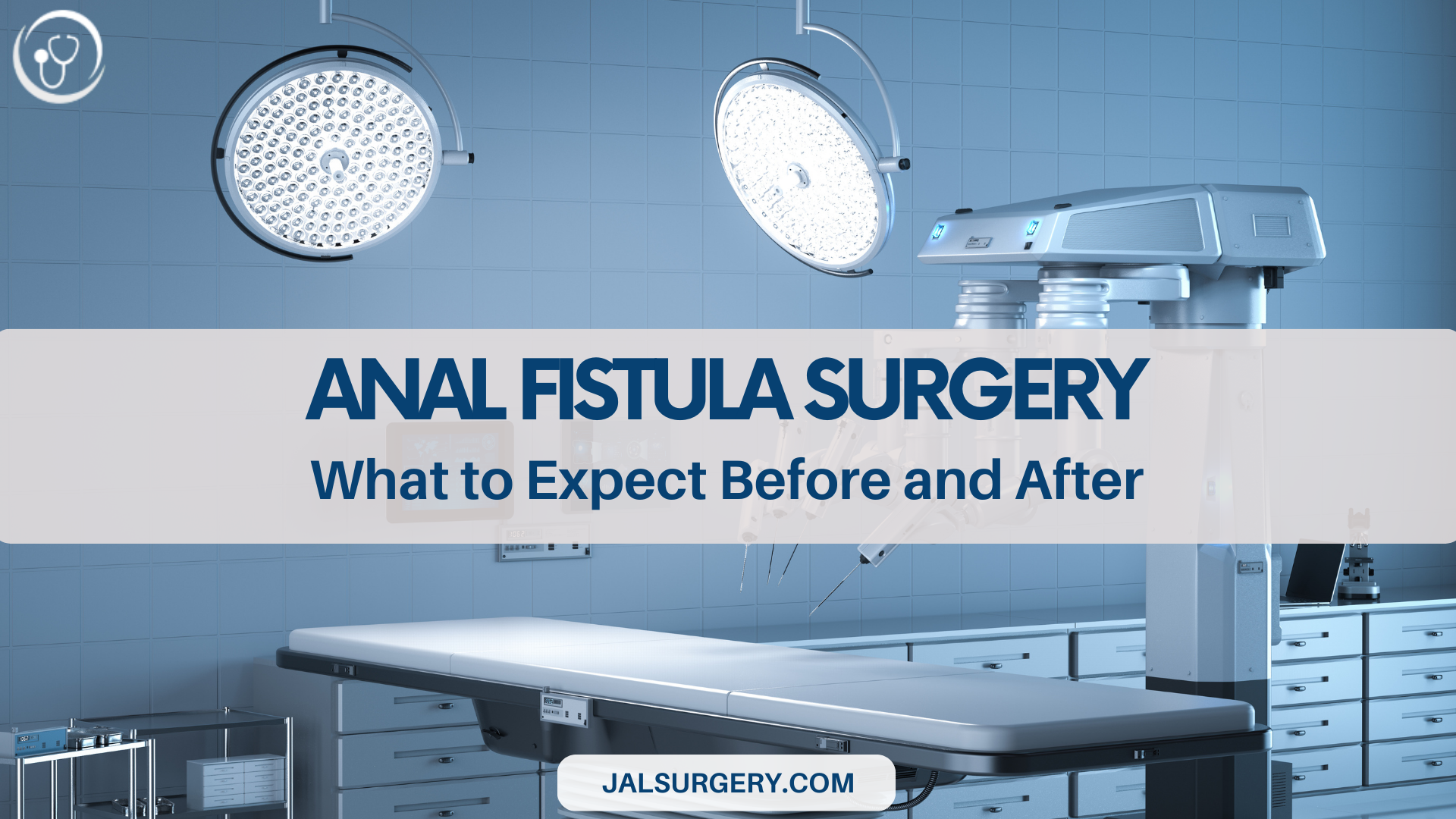An anal fistula is an abnormal tunnel between the anal canal and the skin around the anus. It often forms after an anal abscess that didn’t heal properly. Because fistulas rarely close on their own, surgery is usually the definitive treatment.
Understanding the Problem
Anal fistulas can cause:
● Persistent or recurring discharge of pus or blood
● Pain, swelling, or irritation around the anus
● Repeated abscesses and infections
Different types of fistula (simple or complex) determine which surgical technique is safest and most effective.
Fistulas may vary in length and depth, and some run close to or through the anal sphincter muscles. This is why not every patient can be treated with the same operation. The surgeon’s goal is to clear the fistula tract while protecting continence.
Preparing for Surgery
At JAL Surgery, your preparation includes:
● Assessment and imaging – examination and sometimes an MRI or endoanal ultrasound to map the fistula track
● Discussion of surgical options – such as fistulotomy, seton placement, advancement flap, or LIFT procedure, depending on fistula complexity and the risk to the anal sphincter
● Pre-operative advice – guidance on diet, medication adjustments (e.g. stopping certain blood thinners), and bowel preparation if needed
You’ll usually have the operation under a short general or regional anaesthetic and can often go home the same day.
Many patients worry about the recovery time, but in most cases, hospital stays are not required. Your surgeon will also give you instructions on fasting before the procedure and what to expect immediately after surgery.
What Happens During Surgery
● Fistulotomy (for simple fistulas): the tract is opened and allowed to heal from the inside out.
● Seton placement (for complex fistulas): a soft surgical thread keeps the tract open to drain infection and protect the sphincter, sometimes as a staged treatment.
● Other techniques (advancement flap, LIFT, plug or glue): chosen when preserving continence is a priority.
Your surgeon will explain which approach fits your fistula’s anatomy.
Recovery: What to Expect After
● Pain and wound care – mild to moderate discomfort for a few days, managed with simple painkillers and warm sitz baths.
● Dressings and hygiene – daily showering or gentle baths keep the area clean; light dressings protect clothing.
● Bowel habits – a high-fibre diet and adequate fluids prevent constipation and straining.
● Follow-up – review appointments ensure proper healing and to decide if further treatment is needed (e.g. tightening a seton).
Most patients return to normal daily activities within 1–2 weeks, though complete internal healing may take several weeks depending on the procedure.
Possible Risks and Complications
Like any operation, anal fistula surgery carries some risks. These include:
-
Infection: though uncommon, treated with antibiotics if needed.
-
Bleeding: usually minor and settles quickly.
-
Recurrence: some fistulas can re-form, especially complex ones.
-
Changes in continence: modern techniques greatly reduce this risk, but it depends on how close the fistula runs to the sphincter muscles.
Your surgeon will discuss these risks with you before surgery and explain how they are minimised.
Tips for a Smooth Recovery
-
Plan ahead: arrange for a few days off work and have comfortable clothing and hygiene supplies at home.
-
Keep stools soft: fibre supplements and plenty of fluids reduce strain and protect the wound.
-
Follow wound care advice: gentle cleaning and sitz baths speed up healing and keep you comfortable.
-
Stay active, but avoid heavy lifting: light walking is fine, but strenuous exercise should wait until your surgeon gives the all-clear.
-
Attend all follow-ups: regular check-ins allow your doctor to ensure the wound is healing properly and adjust treatment if needed.
Why Choose JAL Surgery
Our team specialises in anal fistula management, offering:
● Accurate mapping of the fistula to plan surgery
● Modern sphincter-sparing techniques to reduce the risk of incontinence
● Individualised aftercare and rapid follow-up
Conclusion
Anal fistula surgery is highly effective and, with the right preparation and aftercare, recovery is straightforward for most patients. Early specialist assessment gives the best chance of a cure and prevents ongoing infection. By combining accurate diagnosis, tailored surgical techniques, and comprehensive aftercare, JAL Surgery helps patients achieve excellent long-term results and return quickly to a pain-free, active life.

